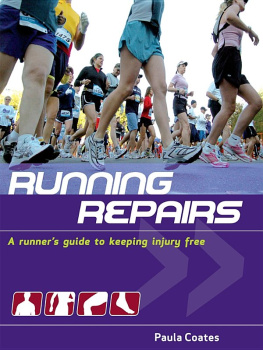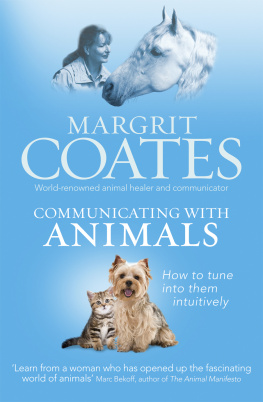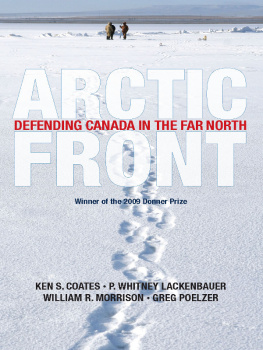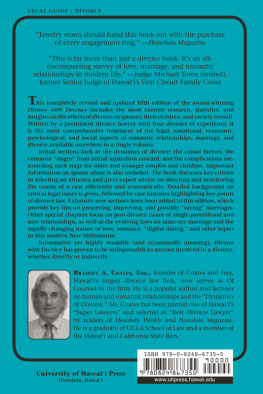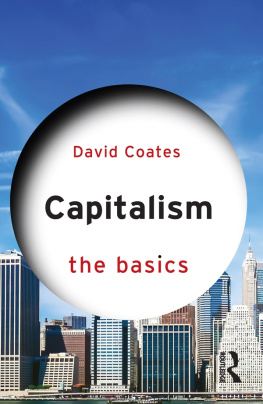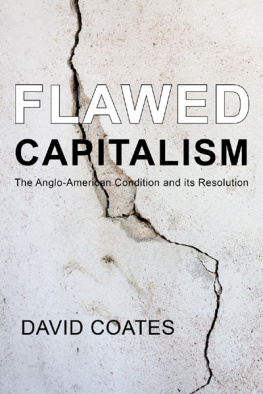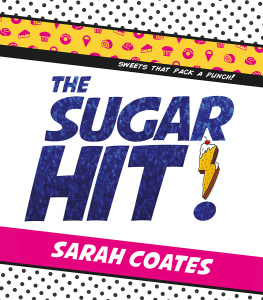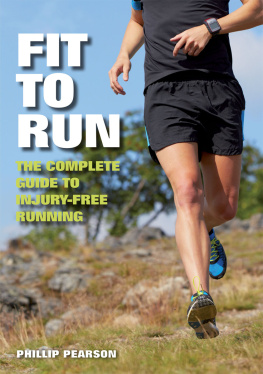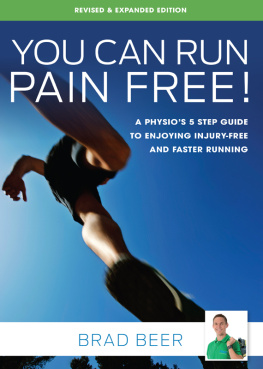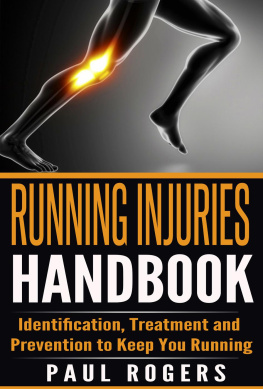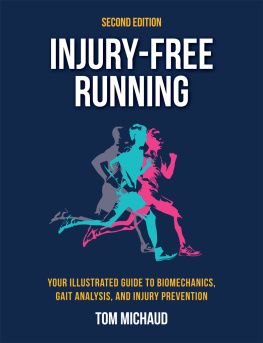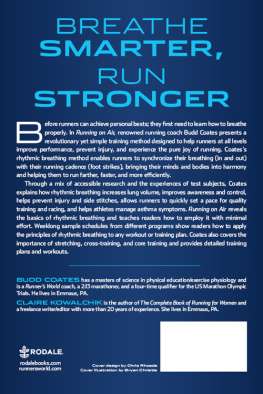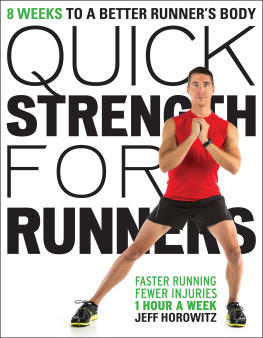
There is a certain look that has become very familiar to me. I see it all the time on the faces of people visiting my physiotherapy clinic although it tends to be more common from January to March, when training for the spring marathon season is in full swing. The look says, Im injured, so my running days are over and its exactly the same on the person trying to get in shape for their first 5km fun run as it is for the seasoned marathon runner who has a personal best firmly in their sights.
My response always starts in the same way, with the words Dont look so worried, its almost certainly not as bad as you think. Then I explain that I have clocked up five marathon finishes and know the highs and lows that go with the territory. If they take my advice and dont try too much too soon thats always the hard bit to stick to they will be back in their trainers in no time. There is a look of relief, an easing of tension in the shoulders, and were ready to start treating the injury.
As a runner no matter what standard you perceive yourself to be you are in a select group of the population: somewhere in the top 10 per cent or so of the most active people in the country, in fact. Good for you! Not only are you physically active, but the chances are that you keep an eye on what you eat and drink and generally take good care of yourself. The training that you do may come with the odd injury setback now and again, and there will be times when you just dont fancy going for that run, but overall your training is making you a stronger, fitter, healthier and happier person. Think about that for a minute, as its easy to forget when youre constantly pushing yourself for this distance or that time, or balancing a hectic life in order to get one or two runs in a week.
A good proportion of the runners that turn up to my clinic dont need to be there. Now, Im not trying to put myself out of work there are times when you must seek specialist help and advice and the skills of a physiotherapist are worth every penny. I will make this very clear throughout the book. However, with some careful planning and appropriate training you should be able to avoid most of the injuries that plague us as runners. Should you pick up the odd ache or pain and we all do at some point then self-treatment is often the most effective way to start. Thats why Ive written this book.

As a runner, when Im training for a particular race I seem to exist in one of three states: injured; recovering from injury; or wondering where the next injury will come from. It neednt be this way. My aim here as a physiotherapist is to put injury into perspective so that its just one more item on the list of runners concerns just like what colour top to run in, what new gadget to go for, how to justify biscuits in the name of carb-loading, that sort of thing.

The book is split into three main parts. service history; by answering a few questions about yourself, you should get a good idea of the type of runner you are, and this will highlight potential injury hotspots for you to work on before they cause a problem.
so that you can work out what you have done to yourself. This in no way replaces an assessment with your physiotherapist but it will help you understand what you may have done and why it has happened. It will teach you how to manage the acute phase of each injury, as well as answering some of the questions you may have about what happens next.
all you want to do or have time for is to get out there and run, but I promise you that minutes spent on these exercises will keep you on your feet for longer, overall, and will even improve your fitness and times. Just take a deep breath and add them to your training you will learn to love these sessions when you see the results.
>> FITNESS FACT
Make running injury-free your ultimate goal. That way you will achieve all your other goals.
This book first came to my mind in 2005. With just six weeks to go until the London Marathon, I badly sprained my ankle. I looked at my schedule and it didnt say stop training for two weeks the schedules never say that, do they? I wracked my brain for solutions. I even dragged my podiatrist who fortunately is a good friend over to my clinic at 9am on a Sunday morning just in case she could do something I hadnt already thought of myself. A little overdramatic, maybe, but thats how much it meant to me at the time. It wasnt until I was running over Tower Bridge and turning right along the highway six weeks later that it dawned on me why I had got back into training so quickly with minimal impact on my fitness. I was lucky in that I had had professional knowledge at my fingertips. Having that expertise to hand was the difference between making the start line and watching the race on TV. This knowledge is exactly what runners need in order to prevent and manage their injuries. There are many questions that you ask yourself when you are injured, and having the answers at hand will speed up your recovery and prevent injury in the future.
So, if youre fit and well then make sure you read so that you stay that way. If youre suffering with an injury, look it up, find out what to do and, most importantly of all, dont worry. Happy running!

Note: throughout there are case studies to illustrate the prevention and cure strategies used to treat running injuries. Use this chart to find the most relevant case studies for you.
Case study | Sex | Age | Condition |
| Male | |
| Male | |
| Female | |
| Female | |
| Female | |
| Male | |
| Female | |
| Male | |
| Female | |
| Male | |


This part of the book is all about getting to know yourself. If you understand how your body moves when you run, youll be able to train to your strengths, manage possible areas of weakness and pick the best kit to support you. If you think of your body as a machine, then this is your very own MOT. Were going to see how youve looked after, youll be finely tuned and ready for the road.

CONTENTS
Having a basic understanding of how your body works will help you to manage an injury. Youll know who can give you the best professional advice and when to visit them. It can also help you to train properly to avoid injury in the first place (more details in ).

